I have been growing vegetable not just in my backyard, but also on my front yard. The message and motto has been – GROW FOOD, NOT LAWNS.
So, I had a patch of the front yard that was covered by cardboard to keep the grasses from coming up, and helping it to mulch and add organic compost to the soil, and then adding a small two inch layer of fresh soil and organic mushroom compost I already had, mostly all in my backyard.
Then, I made a small rectangular partition with wooden boundary, and stuck some seeds of Swiss chard, and beet and manually watered them with my garden hose. The seeds geminated readily and started growing. Their lovely green large leaves changed the look of my front yard.
I also stuck a series of sunflower seeds… to sort of brighten up the place a bit and also to attract birds for the seeds.
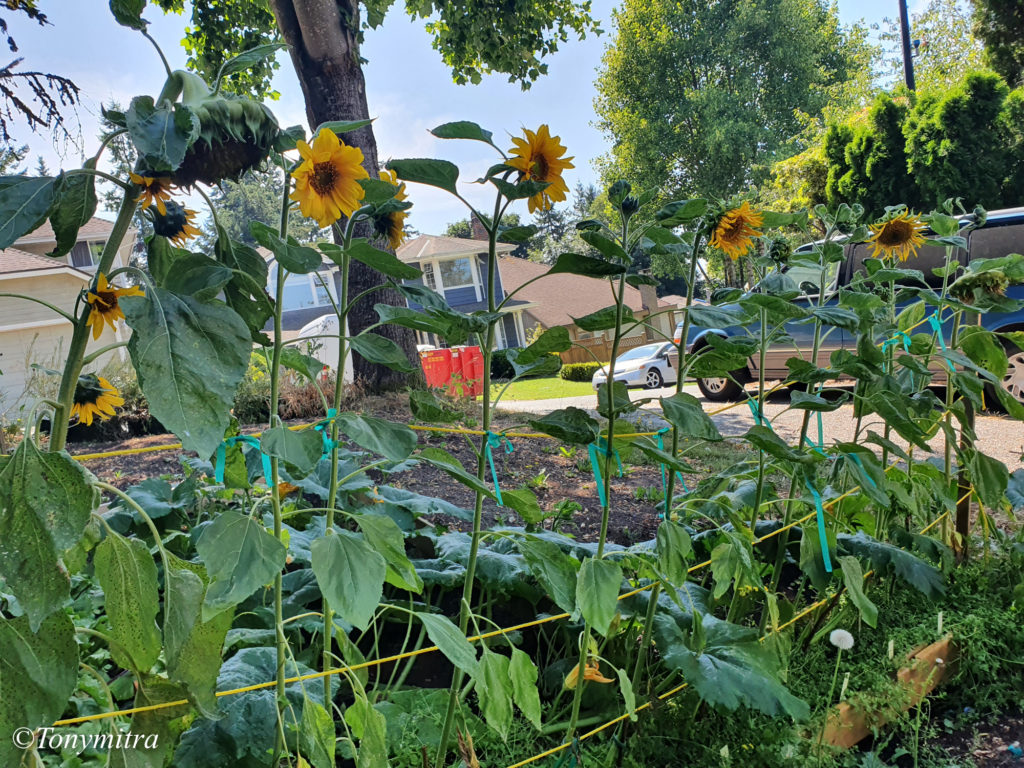
Something else started happening the same time. Some tiny seeds of my vegetables, of previous harvests, somehow ended up in the transport of the soil from backyard to to the front. These included a few tiny potatoes that I did not notice while harvesting last year, an also some seeds of squash and pumpkin.
All these started sprouting when they got some splashes of water from my garden hose as I watered the Swiss chard, beet and sunflowers.
Uninvited they more or less filled out the rest of the space in my font yard, including sprouting plenty of cucubrita flowers attracting a new group of bees, and also ending up creating some squash and pumpkins, which are growing even now. The potato plants got as high as my hip and are flowering. So I guess I shall get some potato too.
And then there came this giant mushroom.
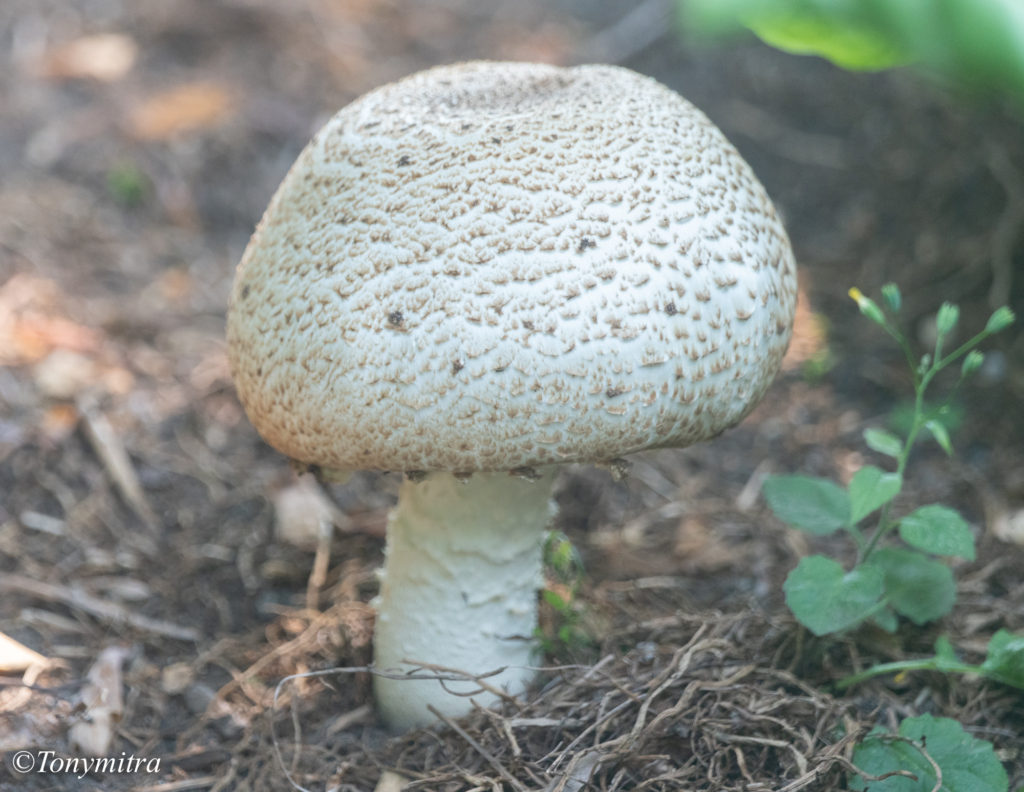
It came out of nowhere, right beside the bed of chards and beet. And it grew massive. Its stem was around two inches thick and the head was well over six inches when ball shaped. But in a day, it opened up, like unfurling of a sail, into a gigantic umbrella almost a foot wide.
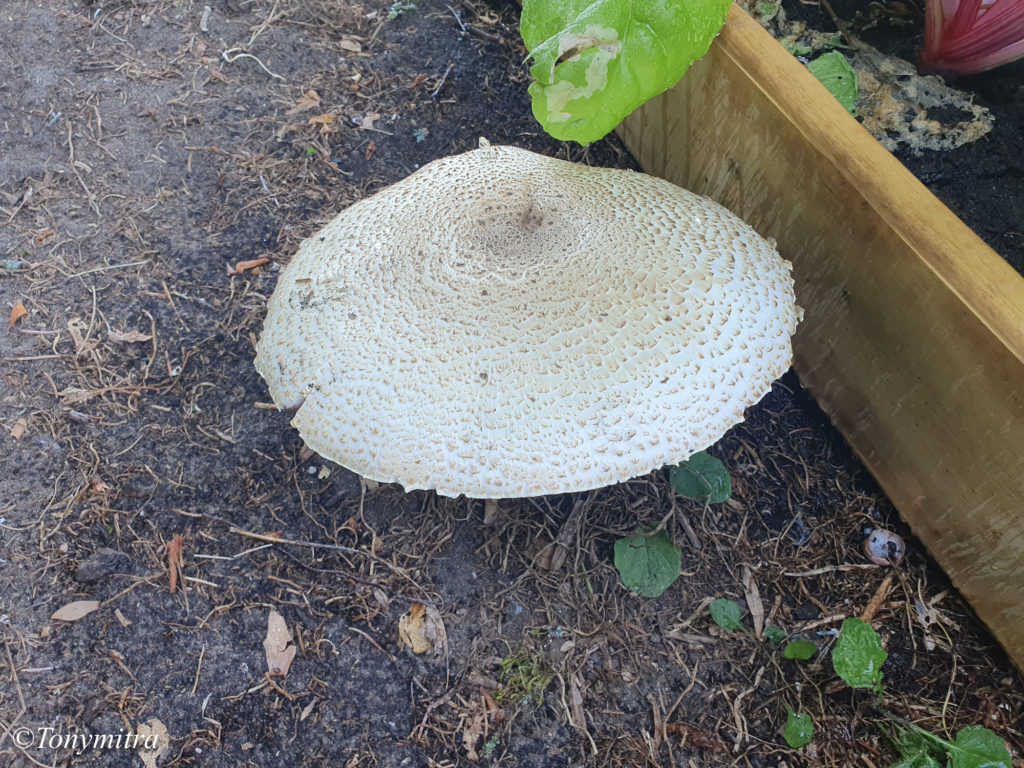
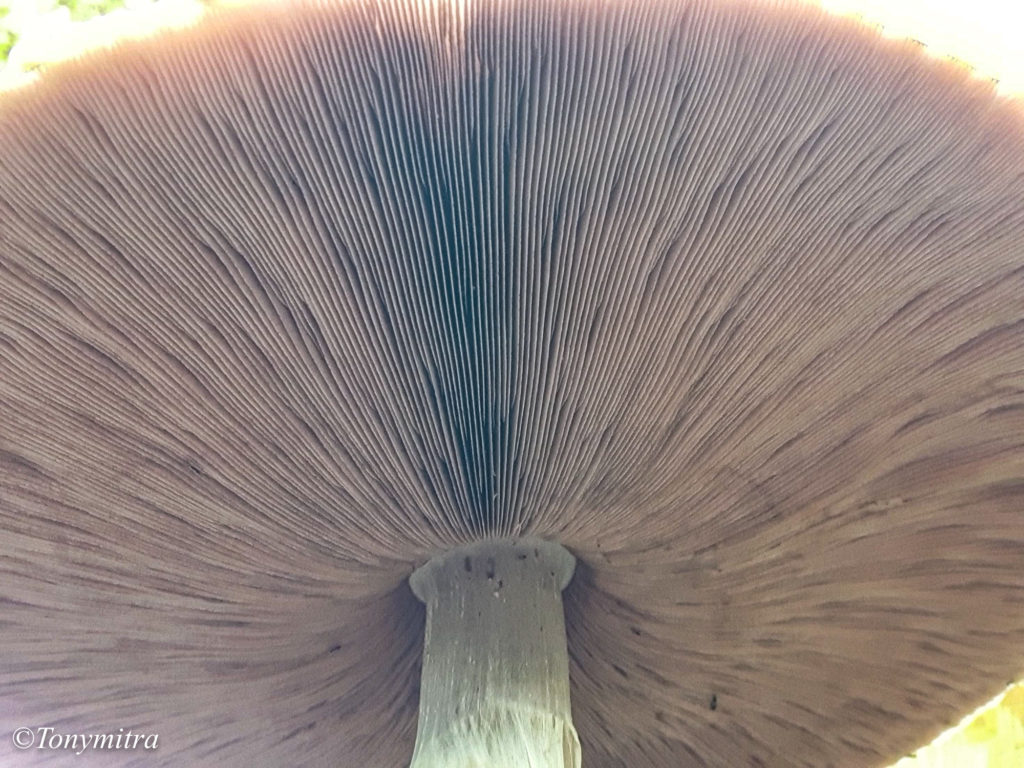
I was more than surprised. I was actually curious to know if this was edible. I knew many mushrooms are toxic and can make me sick. I was no expert. So I did a few things.
- I posted its pictures on Facebook, and asked if anybody could identify.
- I googled to look for mushroom ID for coastal North America.
- I ended up downloading an using a mushroom identification app.
- And finally, I pinched off a tiny, tiny section of the edge of the umbrella and put it straight in my mouth, to check if my tongue protested. It tasted sort of nice and not toxic at all. Then I ate that small piece up to see if my stomach might protest. It did not.
At the end of all these efforts and attempt to ID it, it turned out a common, popular and edible mushroom of these parts, called Agaricus augustus.
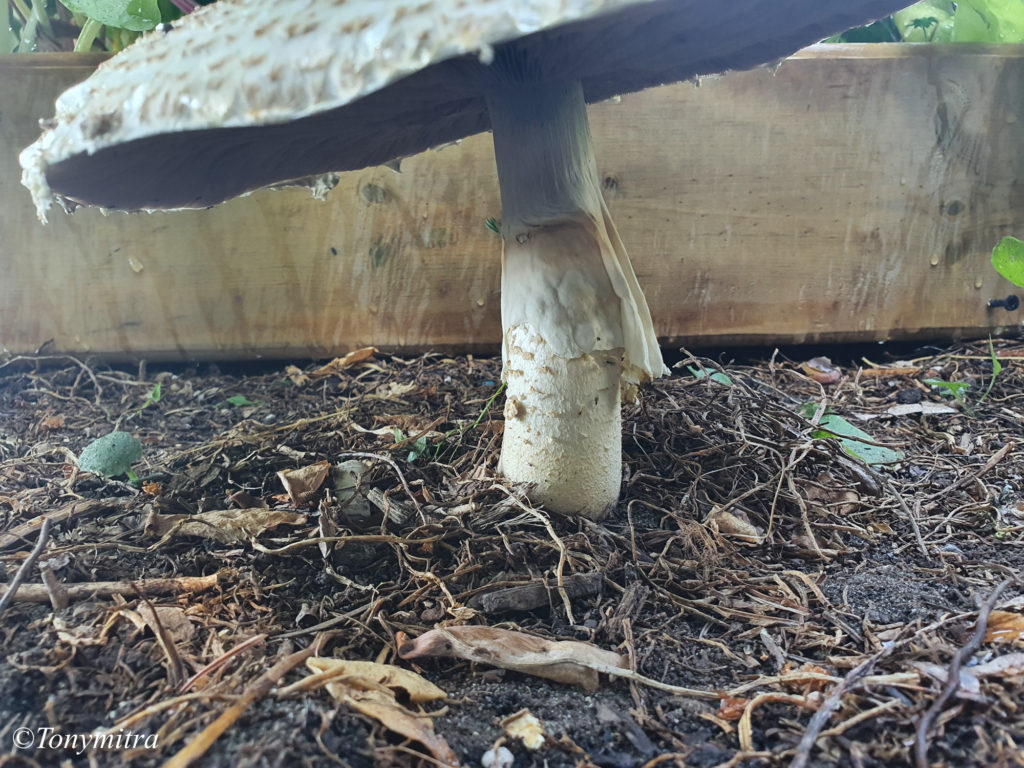
So I uprooted it, an brought it indoor to my kitchen.
My wife was not too fond of eating mushrooms. So I decided to cook it and have it myself. I had no clue how to cook a mushroom. So I just steamed it for 15 minutes. It was way too big to fit into the steamer in one piece. So I chopped it up in pieces first. The frilled umbrella on the underside turned from off white to pitch black while steamed. The rest of the mushroom remained off white.
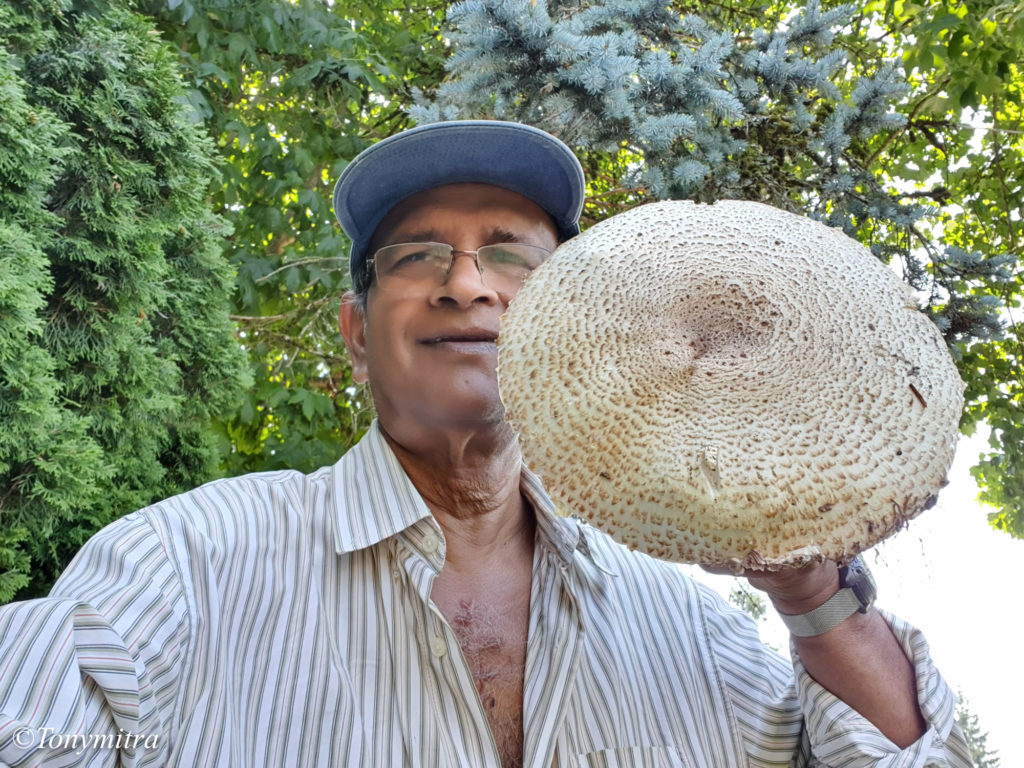
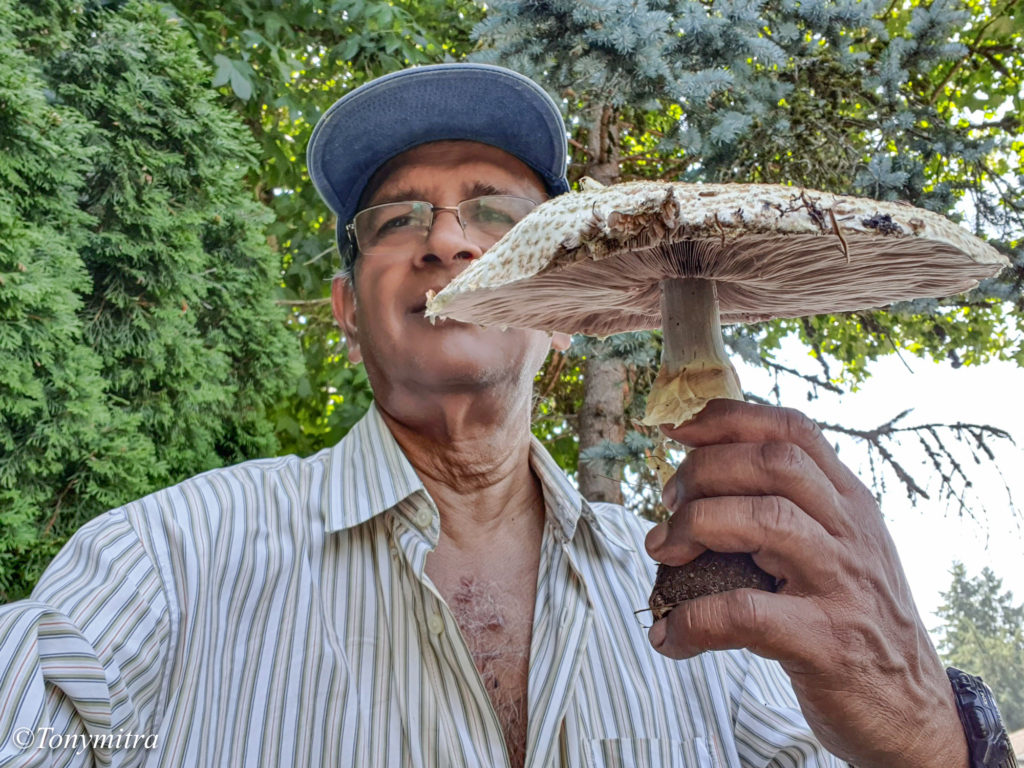
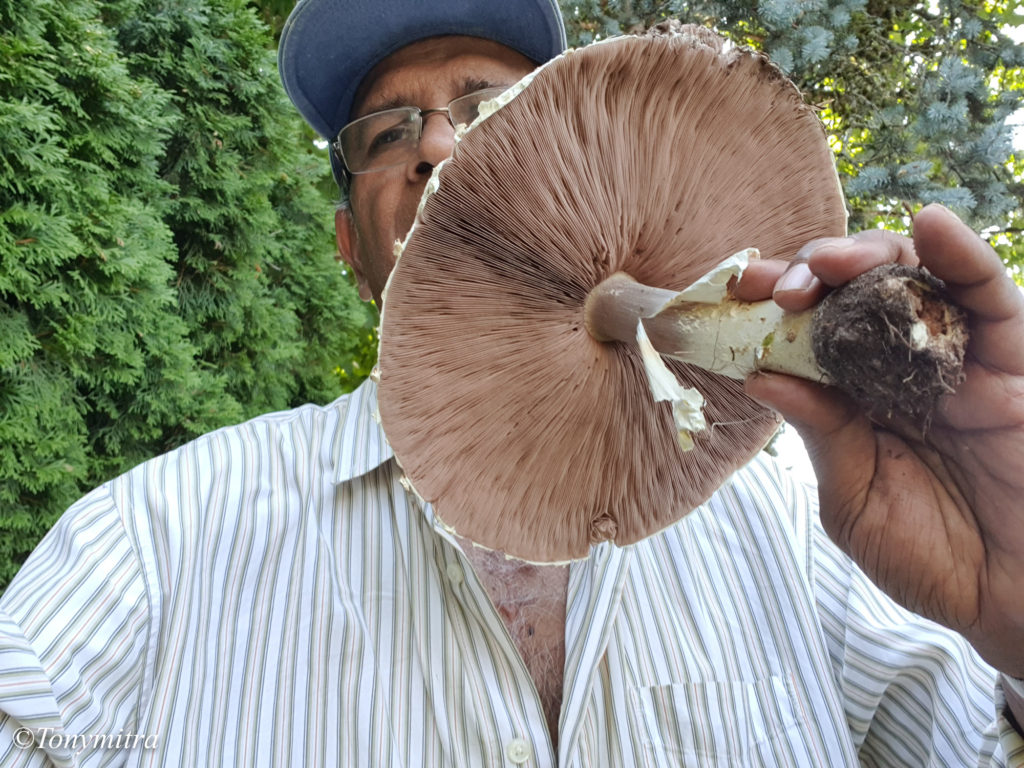
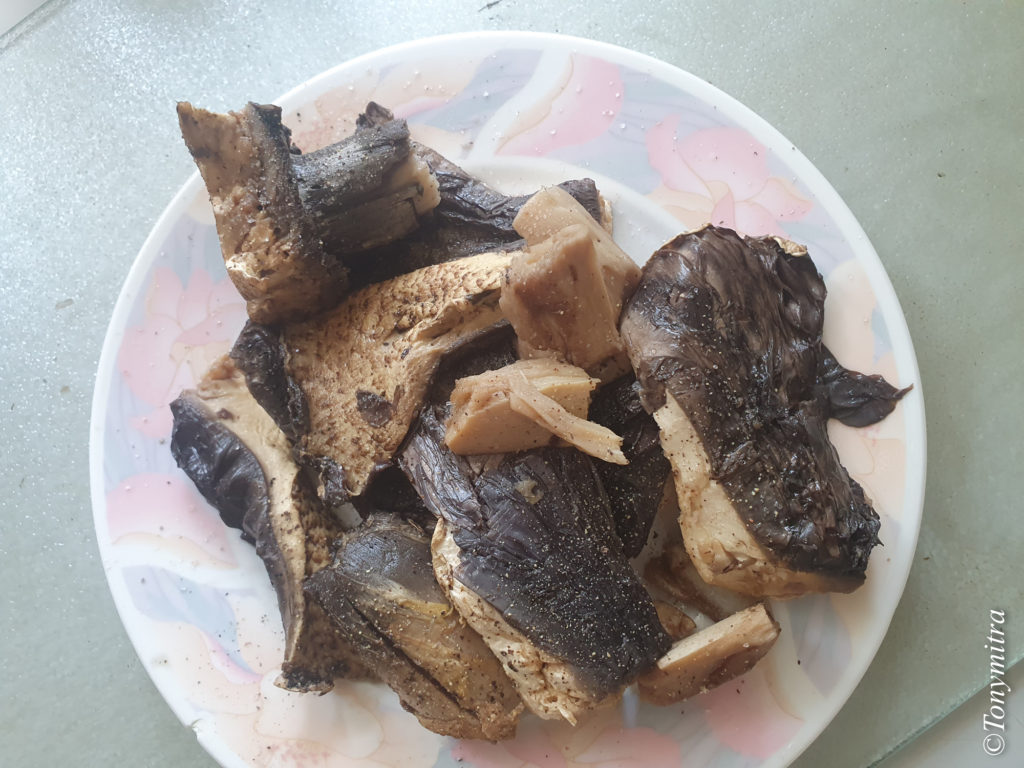
I added nothing more than a pinch of salt and pepper and then tried it with a fork. It tasted vaguely like a medium rare beef steak, and quite filling. In fact, this mushroom by itself filled me up like a full meal for an adult.
Well, now I know how to identify an Agaricus augustus mushroom, and at least how to cook it by steaming, and that it is a great wild food. Next time I find another, I am going to be fancy in my cooking.
